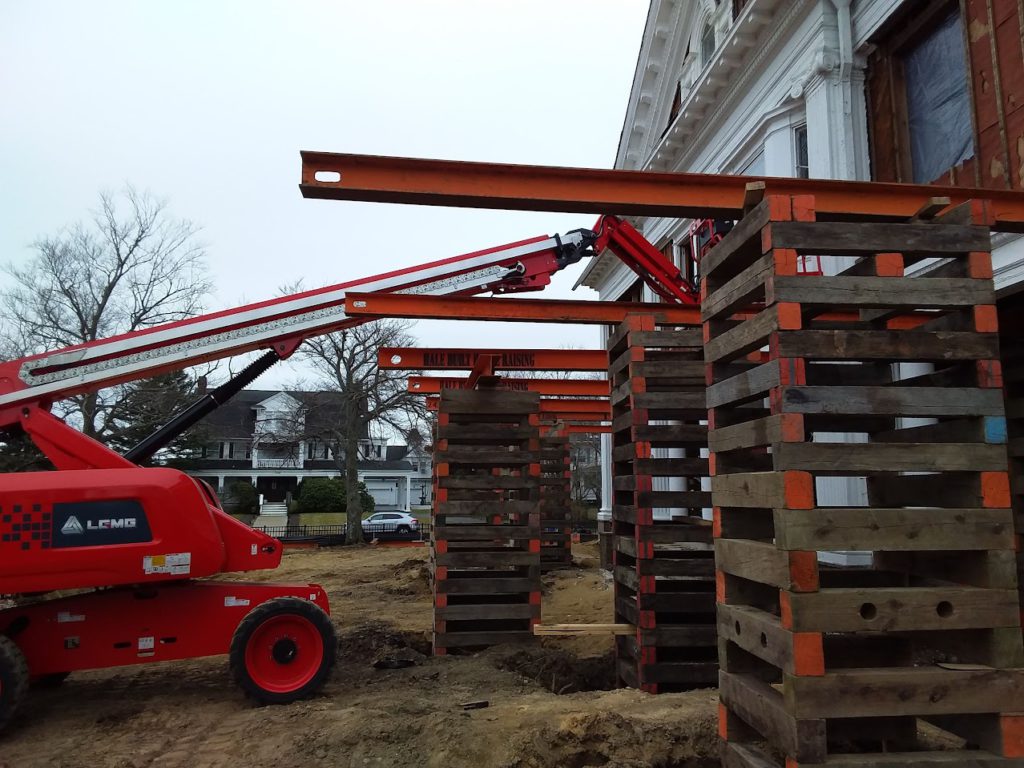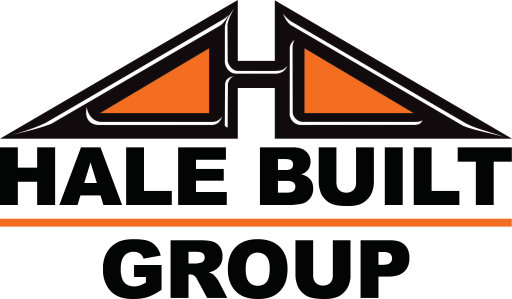
Proprietors often employ pier and beam foundations in states with expansive clay soils. Despite many mid-Atlantic states featuring loamy soil types rather than clay soils, each still has diverse soil compositions. No matter the soil type, pier and beam foundations deteriorate over time due to various environmental factors.
Fortunately, Hale Built Group offers affordable pier and beam foundation repair services and free estimates and inspections in the states mentioned above. This article delves into the intricacies of these services, common pier and beam damage types, cost estimates, and more.
For more information on pier and beam repair in NJ and the mid-Atlantic, continue reading or call our structural engineers.
Let's start with basic information on piers and beams: What are piers and beams? What are their differences? What advantages do pier and beam foundations have over other foundation types? When should you consider pier and beam foundations over other foundation options for your construction project?
Pier and beam foundations offer several benefits over other types of foundations, such as slab-on-grade or basement foundations:
While pier and beam foundations have several advantages, there are also some drawbacks to consider:
When considering a pier and beam foundation for a construction project, homeowners should weigh its advantages and disadvantages concerning the structure's specific needs, the local environment, and budget constraints. Each foundation type has its ideal applications, and a thorough analysis should inform the choice of these factors.
Pier and beam foundations are particularly well-suited for specific situations and environments:
Understanding these basics and advantages will help you determine if pier and beam foundations are the right choice for your construction project, considering the structure's specific needs, local building codes, and environmental conditions.
Unless trained to identify varying types of foundation damage, proprietors may find it difficult to diagnose or identify pier and beam foundation damage.
Below, we've listed symptoms and the corresponding indicated damage types to familiarize our clients with what professionals look for in foundation damage inspections:
Understanding these signs helps homeowners identify when to call professionals for a detailed inspection and necessary repairs. Swiftly identifying and addressing pier and beam foundation problems prevents severe damage and maintains the structural integrity of your NJ home.
So, if you fear your pier and beam foundation suffers from any of the mentioned conditions or another form of damage, contact us or your local structural professionals for a comprehensive inspection.
Embarking on a pier and beam foundation repair journey might seem daunting initially, but understanding the process can demystify what lies ahead and help you feel more at ease.
Here's an easy-to-follow walkthrough of what typically happens:
Before making repairs, you'll need an inspection and estimate for the required repairs. This phase is like taking your car to a mechanic for a diagnostic test or the doctor for a checkup.
A professional will come to your home to examine your foundation closely. They may run tests or immediately prescribe a repair option that best suits your case.
They'll check for the signs of damage we discussed earlier—things like uneven floors, cracks, or sticking doors. They will also check for other damage that affects your foundation and structural integrity.
Once the inspection is complete, it's time to talk solutions. Every home is unique, meaning contractors or homeowners will likely tailor the plan to address your foundation problems.
Plan adjustments often involve adjusting the height of piers to level out the floor, changing the required pier or beam material, or increasing the number of new supports to ensure everything is as stable as a century-old oak tree.
During this phase, it's also ideal to chat about pricing and understand the repair plan before any work begins. Ask your contractor about their approach to fixing pier and beam foundations and how much it typically costs. This conversation is not just about numbers; it's an opportunity to learn about the repair process and to sense the contractor's expertise.
Expect them to discuss various repair methods tailored to the specific issues your foundation is facing and factors like the type of soil your home sits on and local moisture conditions. If a contractor leans heavily on a one-size-fits-all solution, it might be a sign that they're not as seasoned as you'd like.
After all, a foundation fixed in areas with sandy soils, like near the Jersey Shore, will need a different approach than one sitting on the clay-heavy soil found inland.
Being inquisitive ensures the proposed solution fits your home's specific situation, leading to a more effective and long-lasting repair.
The last step is ensuring you don't return to square one a few years later. This step involves discussing complementary home improvements, such as installing better drainage around your home to keep water away from the foundation, installing deep foundation strengthening mechanisms, installing vents to ensure proper airflow in the crawl space, or adding moisture barriers to protect against dampness.
Just like adopting a healthy lifestyle to avoid future visits to the doctor, these preventative measures are about taking care of your foundation so it can continue to support your home for years to come.
Remember, despite being highly specialized, repairing pier and beam foundations is manageable. By understanding what to expect and asking the right questions, you can navigate the process confidently and ensure your home stays safe and sound.
When planning for New Jersey pier and beam foundation repairs, homeowners should be aware that costs can vary widely.
Here's an overview with numerical ranges to help guide your budgeting:
The general cost ranges from approximately $2,000 to over $15,000. This broad range accounts for the diverse scope of repairs that might be needed, from minor adjustments to extensive structural work.
To provide a comprehensive view at a glance, we've provided the following table of average pier and beam costs and associated factors
| Property Type | Repair Needs | Estimated Cost Range |
| Residential | Minor Repairs | $2,000 - $5,000 |
| Residential | Moderate Repairs | $5,000 - $10,000 |
| Residential | Extensive Repairs | $10,000 - $15,000+ |
| Commercial | Minor Repairs | $3,000 - $7,000 |
| Commercial | Moderate Repairs | $7,000 - $12,000 |
| Commercial | Extensive Repairs | $12,000 - $20,000+ |
For accurate cost estimates, we advise contacting us for a free estimate and inspection.
The cost of pier and beam foundation repair is affected by several critical factors, each contributing to where in the range your project might fall:
By considering these factors, homeowners can gain a more nuanced understanding of potential expenses. Remember, these ranges are estimates to assist in preliminary budgeting. It is advisable to obtain quotes from several foundation repair specialists for accurate pricing tailored to your specific situation.
Ready to address your pier and beam foundation concerns?
Hale Built Group is here to help, offering free estimates and inspections to kickstart your repair process. With decades of experience serving clients across NJ, NY, Maryland, D.C., Virginia, Delaware, and Pennsylvania, our structural engineers commit themselves to providing you with the expertise and support you need.
Connect with us for more information on pier and beam foundation repairs or to further explore how we can protect and enhance your property's foundation.
